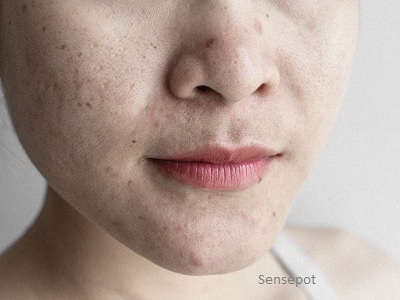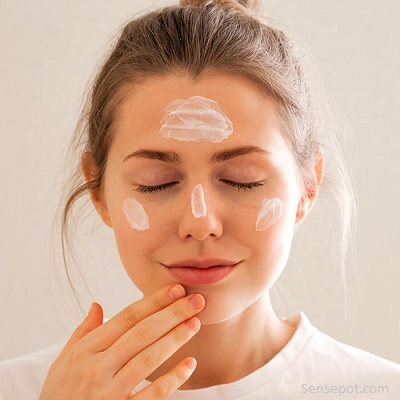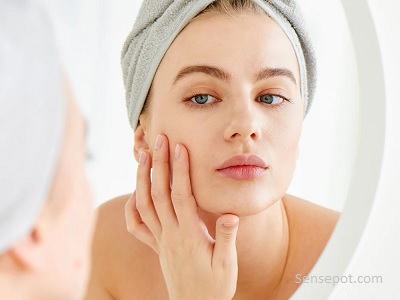Features of the production of sebum by the skin largely affect its condition. Peeling, black dots, oily sheen – only a small part of the problems generated by insufficient knowledge of your body and inappropriate care.
Beauty consultants, and pharmacists by education, will help you figure out what causes affect the production of sebum by the skin of the face and head, and what sebum-regulating components should be looked for in the composition of care products.

What is skin sebum?
Sebum (sebum) is a secret secreted by the sebaceous glands, an essential product for maintaining healthy skin.
It is a mixture of lipids, which primarily performs a barrier function: it protects the epidermis from dust, ultraviolet radiation, and the negative influence of the external environment.
Also, thanks to him, the skin looks moisturized, because the lack of sebum always leads to peeling.
Another important function is bactericidal. Thanks to unsaturated fatty acids, which are natural antiseptics, sebum blocks the reproduction of pathogenic bacteria.
But unfortunately, due to various factors, the skin can secrete much more secretion, and thus cause discomfort with oily sheen, enlarged pores, subcutaneous rashes, and black spots.
The causes of excessive sebum secretion can be different:
- Stress;
- Hormonal disruptions ;
- Infectious diseases;
- Unbalanced diet.
The season also influences: in summer there is always more sebum than in winter.
How to Regulate Sebum Production
Competent home care has a significant impact on the regulation of sebum secretion.
For example, an aggressive cleanser containing Sodium Lauryl Sulfate can cause normal or combination skin types to be confused with oily ones.
The fact is that from improper cleansing, the lipid barrier is violated. The skin, trying to restore it, begins to produce even more sebum to protect itself. Visually, it looks greasy and has an excessively unhealthy shine, so this condition is easy to confuse with oily skin type.

Dry skin type is not prone to this, because it always has a lack of lipids, that is, skin sebum, due to the absence of visible large pores. This type of skin needs to be especially careful when choosing cleansers: choose soft cleansing, milk, or foam.
When there is not enough sebum (this condition is also called dry sebum), the skin becomes dehydrated and dry, the epidermal barrier is broken and, unfortunately, bacteria can penetrate the epidermis, which leads, among other things, to rashes.
How to form the right and comprehensive care?
With an excessive amount of sebum production, you should pay attention to products containing actives for sebum regulation, such as:
- Niacinamide (niacinamide);
- Tea tree (tea tree);
- Salicylic acid (salicylic acid);
- Zinc (zinc);
- Mandelic acid;
- Bakuchiol.
Such components can be in any cosmetics for home care: both in cleansing, tonic and in cream or serum.
Not all “Sulfate” in the composition automatically makes the product undesirable for purchase. For example, Sodium Lauryl Sulfate is made from alcohol, while Sodium Coco Sulfate is made from a combination of coconut oil fatty acids. Both components are anionic surfactants, but SCS may well be present in the composition because it has a softer formula.
If your skin type is dry or dehydrated due to improper care (you often feel tightness, dryness, and peeling), then you should pay attention to products with the following components:
- Ceramides;
- Centella;
- Panthenol ;
- Aloe ;
- Squalane.
How to visually reduce sebaceous threads?
The sebaceous filaments that you can see on the face, especially in the area of the nose, forehead, and chin, are the channels through which sebum is brought to the surface of the skin. And a very bad idea is to mechanically squeeze them out. Instead of cleansing, you risk getting increased secretion, inflammation, and aggravation of the problem.
The sebaceous threads are especially noticeable in the owners of a thick sebaceous secret. To visually reduce them, you need to select care that will perform two important tasks:
- Prevent the accumulation of excess sebum on the surface of the skin;
- Dissolve sebaceous plugs, and make them lighter.
For this purpose, hydrophilic make-up removers and products with salicylic acid are suitable, which will also help to make the skin clear. But mineral oils (in the composition are most often listed as mineral oil, paraffinum liquidum) can be comedogenic, so it is better to refuse them.

Proper Skincare Routine
Separately, let’s talk about Sebo-regulation of the skin on the head. Often, oily, shiny hair is the result of an improperly selected shampoo, which dries out the scalp, pushing the sebaceous glands to work at high speeds.
The oily type of scalp is contraindicated in such a component as piroctone olamine (Piroctone Olamine), especially if SLS is included in the company. Together, they will negatively affect the skin microbiome, causing a feeling of overdrying, as a result of which they will only exacerbate the problem.
Interesting on the topic The Best Acne Scar Home Treatments of 2023
But the following components will be useful for an oily scalp :
- Selenium disulfide;
- Peppermint extract;
- Salicylic acid.
Proper home care turns the sebum of the skin on the head, face, and nose not into a source of problems, but into a reliable ally and helper. Choose cosmetics with the right composition, because skincare is always a great strategy!
FAQs
1. How often should I wash my face to regulate sebum production?
It is recommended to wash your face twice a day – once in the morning and once before bed. Overwashing can strip the skin of its natural oils, leading to increased sebum production. Use a mild cleanser suitable for your skin type and follow up with a moisturizer.
2. Can diet affect sebum production?
Yes, certain dietary factors can influence sebum production. Consuming a balanced diet rich in fruits, vegetables, whole grains, and lean proteins can promote healthy skin. Avoiding excessive intake of sugary and greasy foods may also help regulate sebum production.
3. Are there any natural remedies to control sebum production?
Yes, some natural remedies can help regulate sebum production. Tea tree oil, witch hazel, and aloe vera have natural astringent properties that can help balance oil production. Additionally, incorporating foods like green tea and omega-3 fatty acids into your diet may have beneficial effects on the skin.
4. Can stress affect sebum production?
Yes, stress can disrupt the hormonal balance in the body, leading to increased sebum production. Practicing stress management techniques such as meditation, exercise, and getting enough sleep can help maintain a healthy sebum level.
5. Should I avoid moisturizing if I have oily skin?
No, even if you have oily skin, it is important to moisturize. Look for oil-free, non-comedogenic moisturizers that won’t clog your pores. Proper hydration helps maintain the skin’s barrier function and can actually help regulate sebum production in the long run.


